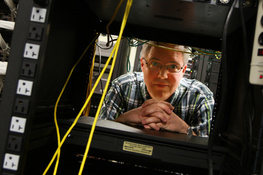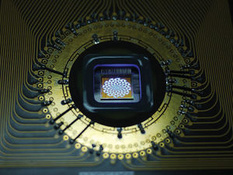urbansheep@gmail.com › Теги: технологические прорывы
Ivan Bessarabov
Irrational Numbers
eugenio
Spaceinvaderz!
☥ guideugé ٩(͡๏̯͡๏)۶
голос в темноте
je suis frf
"Computer scientists have developed software that not only detects and eradicates never-before-seen viruses and other malware, but also automatically repairs damage caused by them. The software then prevents the invader from ever infecting the computer again." • #будущее_прекрасно ∙ #технологические_прорывы - urbansheep@gmail.com
во-первых, opensource! во-вторых, пора знакомиться с Антоном Бурцевым: https://www.flux.utah.edu/project... - eugenio
Holographic Displays Coming to Smartphones - IEEE Spectrum - http://spectrum.ieee.org/consume...
cyberpunk soul
Ivan Bessarabov
glukki
Victory through semantics
ⓒⓔⓐ
9000
mindszenty
A. T.
bag of dicks to Glasgow
“The light-field display “is going to be the next big revolution in displays,” says UC Berkeley’s Banks. “But the public won’t accept it if it doesn’t have good color, doesn’t look high resolution. Right now, it’s not feasible with cost-effective equipment. But computers are getting faster, and people are getting smarter and learning shortcuts, so someday that will be achievable.” ¶ “That day will come,” says El-Ghoroury. “Maybe two to three years, not much longer.” • #технологические_прорывы и #будущее_прекрасно, опять же. - × × ×
Qualcomm says its first commercial neuromorphic (brainlike) processor is coming in 2014 — Brainlike Computers, Learning From Experience - NYTimes.com - http://www.nytimes.com/2013...
slipstream
Gleb Kalinin
Иван
Elena Shuvalova
Ivan Bessarabov
bag of dicks to Glasgow
кот от котов
newtover
Igor Sereda
адский хардлайн в засаде
indeyets
mindszenty
“The new processors consist of electronic components that can be connected by wires that mimic biological synapses. Because they are based on large groups of neuron-like elements, they are known as neuromorphic processors, a term credited to the California Institute of Technology physicist Carver Mead, who pioneered the concept in the late 1980s.” • #технологические_прорывы и #будущее_прекрасно - × × ×
Да, я скорее про хорошую платформу. Про qualcommовское "neuromorphic hardware" что-то пока не могу найти приличную бумажку, без маркетинга %( - адский хардлайн в засаде
Graphene Imaging Sensor Takes Clearer Pictures, Even in the Dark | TechNewsDaily.com - http://www.technewsdaily.com/18220-g...
glukki
Peter Fedin
bag of dicks to Glasgow
eugenio
Victory through semantics
Irrational Numbers
9000
вприпрыжку с кладбища
“No flash? No problem. A new imaging sensor could soon make it possible for photographers to take clear, sharp photos, even in dim lighting. ¶
Created by a team of researchers at Nanyang Technological University (NTU) in Singapore, the new sensor is highly sensitive to both visible and infrared light, which means it could be used in everything from the family Nikon to surveillance and satellite cameras. ¶
The sensor, which is 1,000 times more sensitive to light than the imaging sensors of most of today's cameras, gets this high photoresponse from its innovative structure. ¶
It's made of graphene, a super strong carbon compound with a honeycomb structure that is as flexible as rubber, more conductive than silicon and which resists heat better than a diamond.” • #технологические_прорывы - × × ×
Вот и славно. Через пару шагов будут гибкие фотосенсоры, к ним органическая микрооптика с изменяемой геометрией и микромеханикой, и что там дальше ещё не успели придумать фантасты? - × × ×




